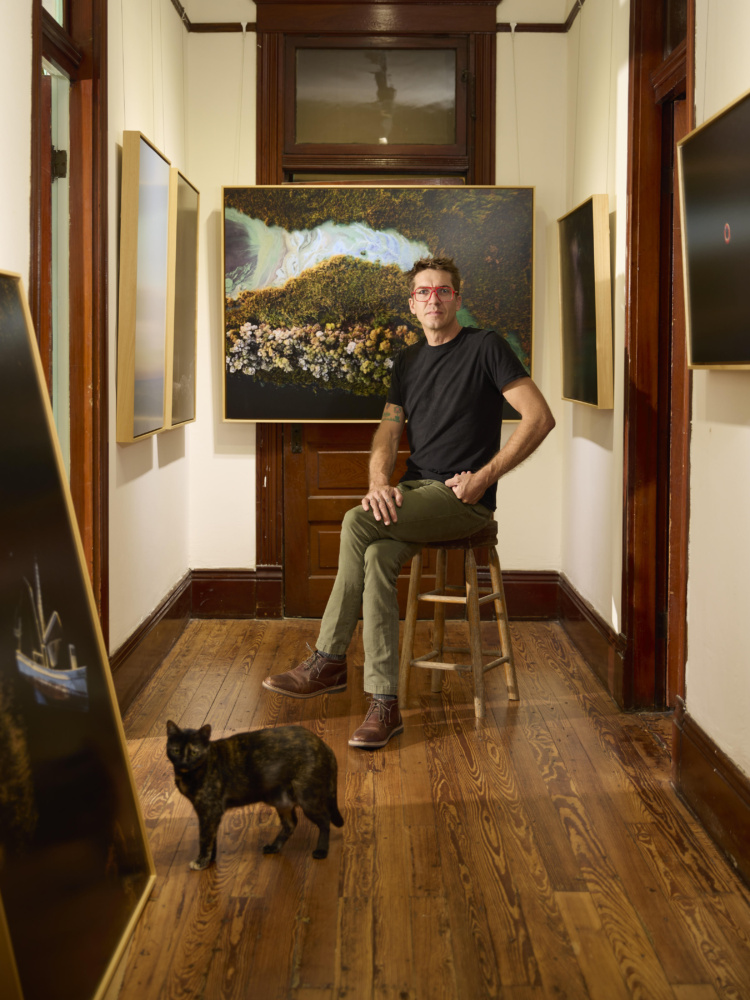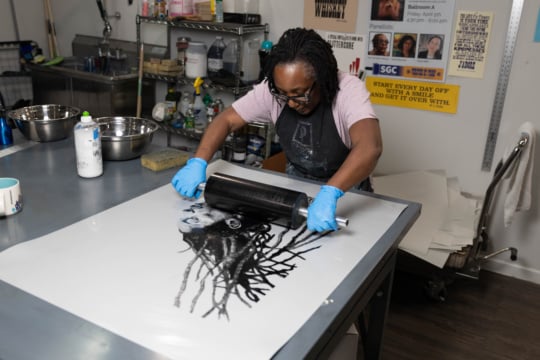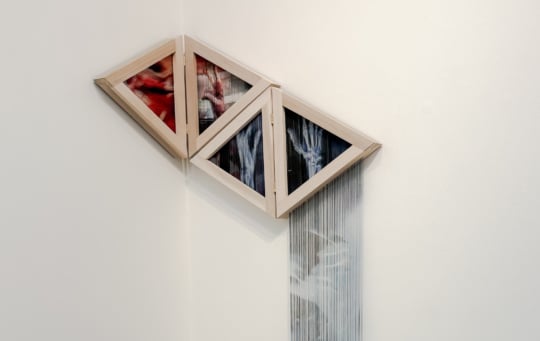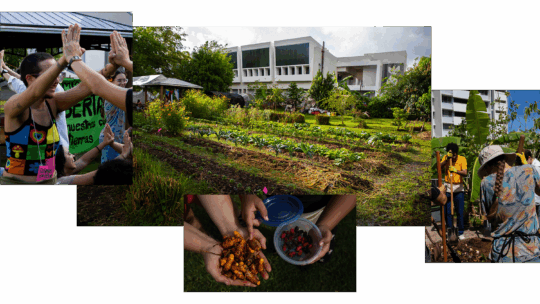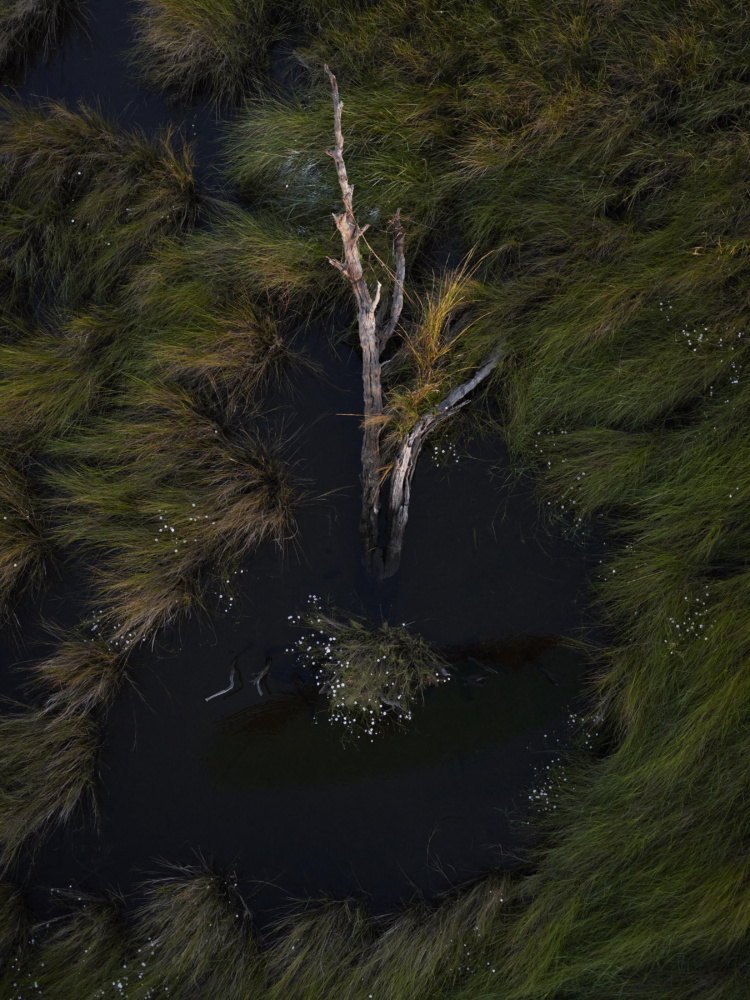
At the beginning of the summer, I emailed aerial photographer Ben Depp to ask him a few questions about his book Tide Lines: A Photographic Record of Louisiana’s Disappearing Coast. A week later, I was sitting at the kitchen table of his beautiful New Orleans home, a few blocks from the Mississippi River, drinking strong black coffee and discussing skyrocketing homeowners’ insurance rates in Louisiana. Two months after I visited Depp’s studio, my family moved from New Orleans to the Piedmont of Virginia a few days before Hurricane Francine, a month before Hurricanes Helene and Milton. We’d been priced out of our home in the Gentilly neighborhood when our homeowner’s insurance went up again, a 275% increase. Since that studio visit, Depp and I kept in touch through emails, sending each other book and documentary recommendations, and checking in on each others’ projects. The conversation below happened virtually in October. It is the culmination of a hurricane season of emails.
Amy Kennedy: Can you describe the work you’re currently doing?
Ben Depp: For the last ten years, I’ve been flying a powered paraglider, documenting coastal erosion and wetland loss. It started as a documentary, story-telling project and morphed into a more artistic practice. I spend as much time in the marsh as I can, looking for the unexpected. I keep returning because I continue to learn new things about this landscape. The colors and light are always changing. I’m constantly being surprised.
AK: Your work captures the beauty and wildness of the coast, but every image also shows the fragility of the landscape.
BD: It’s the natural state of things. In 2024, there are still really beautiful areas in South Louisiana, though they are just a remnant of what this place was. I find these stunning situations, like a cloud of mayflies in the marsh, backlit by the rising sun during their one-day lifespan as flies, or a flock of pelicans floating at the end of barrier island at sunset. And, I know that much of what I photograph won’t be around much longer. After Hurricane Ida, some of the barrier islands I have photographed were reduced by about a third. Over ten years, I’ve watched one small coastal community of twenty or so homes dwindle to one home.
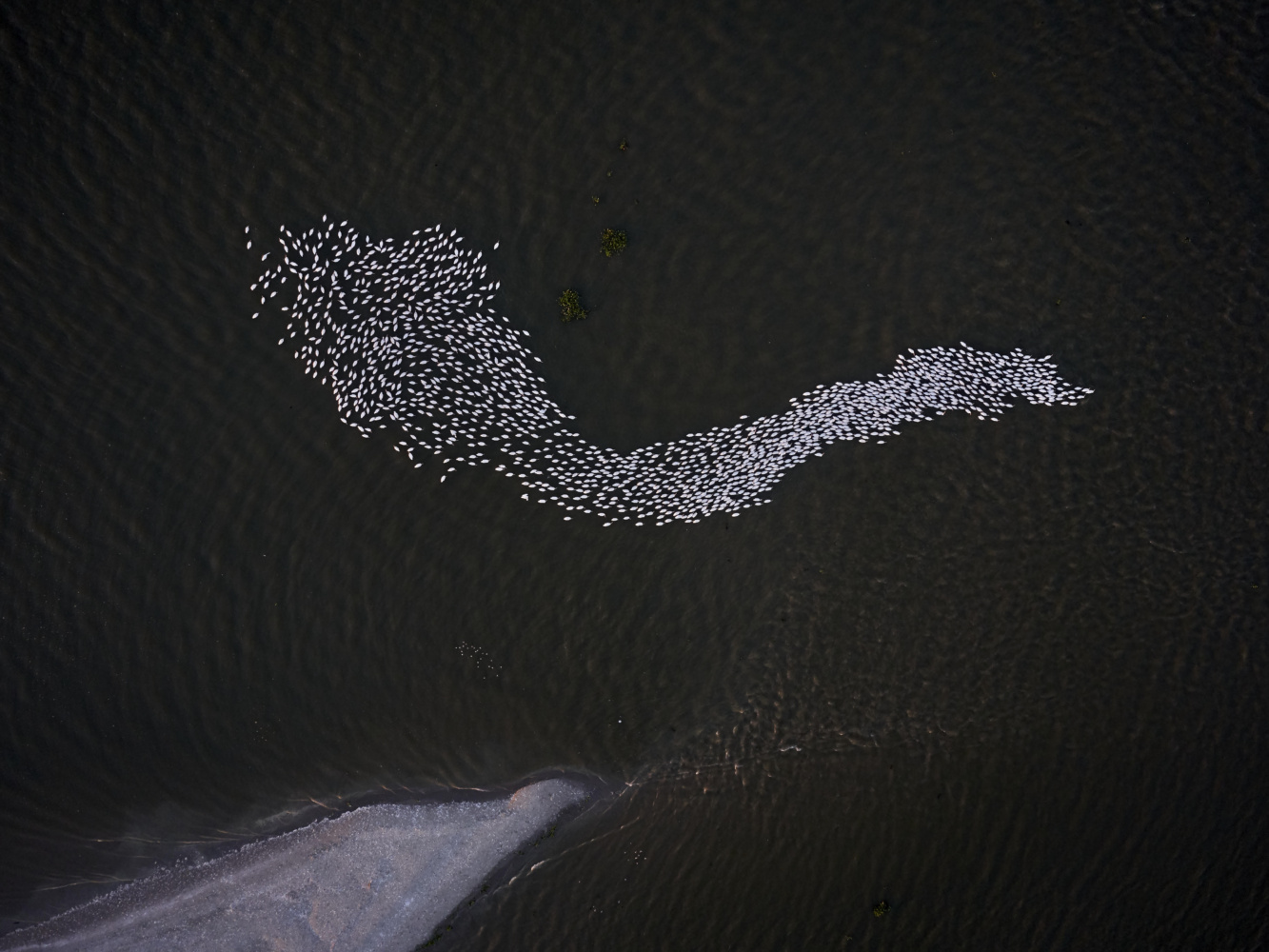
AK: One of the most unique aspects of your work is your method of transportation. How has the view from your paraglider changed your relationship with place and with Louisiana?
BD: The landscape here is flat, so when you’re in a boat or on the ground in South Louisiana, your view is often either open water or a wall of marsh grass. It’s hard to see what’s happening around you. Being up in the air, I can see the land fragmenting apart and sediment moving in the water as the coastline washes away. Having a bird’s eye perspective of the changes caused by the 10 hurricanes that have hit Louisiana while I’ve been making this work makes me acutely aware of how vulnerable we are. From the air, I also get a better sense of the biodiversity and complexity of this place.
My relationship has also changed from spending so much time out there. I spend days camping in the marsh, waiting for good weather, watching the clouds go by. I’ve come to understand South Louisiana as sacred–spiritually alive and valuable in ways that cannot be measured. I think this is how many of our ancestors viewed the natural world before our technologies allowed us to outgrow our everyday interactions with our environment.
AK: It seems perspective is one reason many people can’t comprehend climate change, especially how we perceive time. Coastal Louisiana is losing land at one of the fastest rates on the planet. Geologically, it’s lightning-fast but from a human standpoint, it’s still pretty slow.
BD: I do ground myself by remembering how momentary the existence of this landscape is in relation to geologic time. This is the youngest part of the country–built by sediment deposited by the Mississippi River. It will also be one of the first places to revert to open water. It doesn’t make the loss of this place less tragic, but it’s a reminder that change is constant, especially in a river delta.
Although the land loss is still pretty slow, people are moving out of many coastal communities quickly. In New Orleans, we’re more insulated due to the levee system, so the intensification of climate change doesn’t feel like a reality for a lot of people yet. I see changes not just in the intensity of flooding but also in the lingering of water. There are communities where I regularly see standing water around people’s homes. I wasn’t seeing that ten years ago. I mentioned this already, but dramatic shifts occur due to hurricanes.
AK: When we were trying to schedule this conversation, we had to work around a hurricane.
BD: I canceled on you last time because of Hurricane—which one was that—Helene?
AK: Milton.
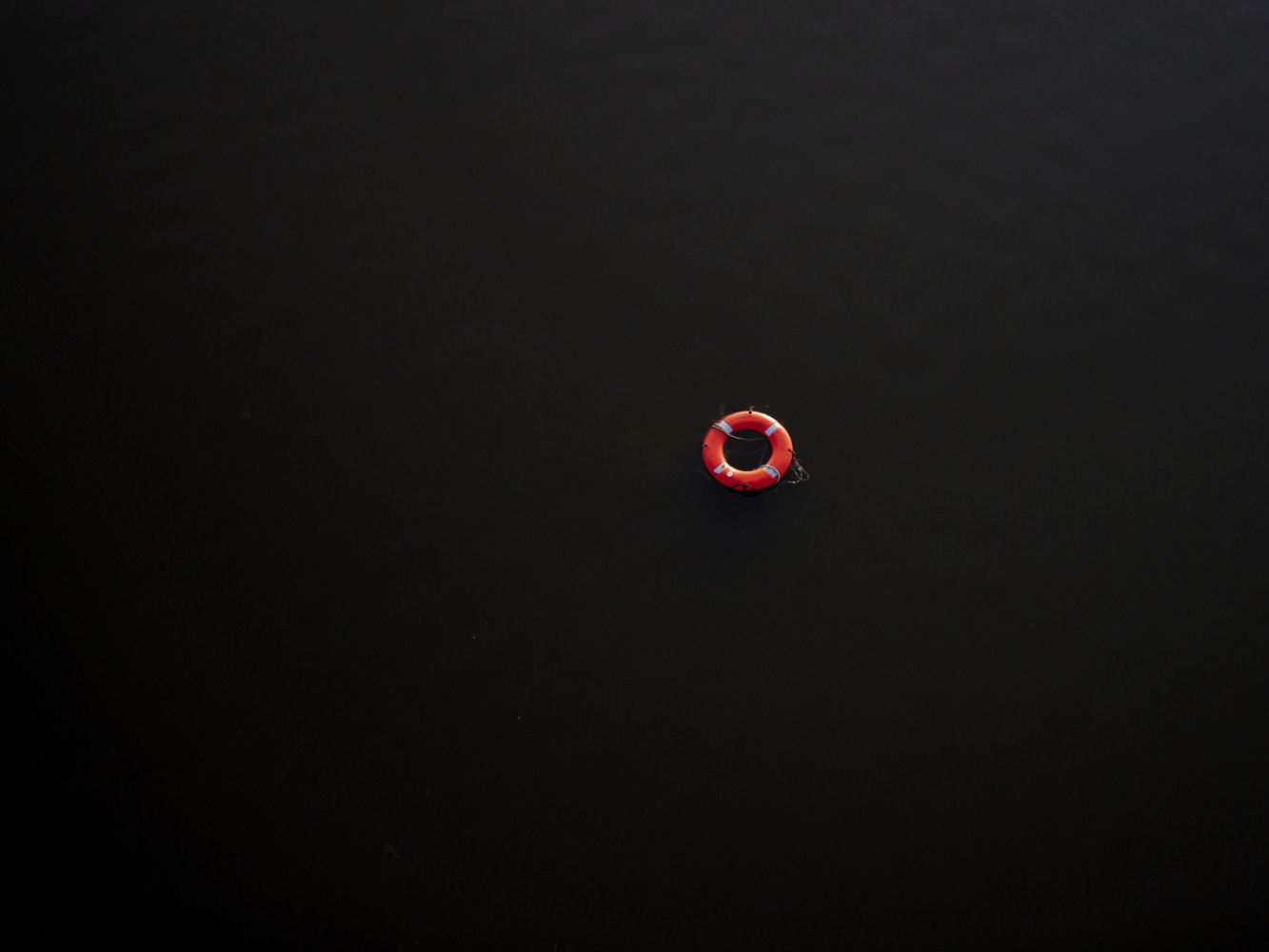
BD: I think a lot about natural disasters, and I’m from North Carolina. But, I was surprised by the flooding in Western North Carolina. Helene was a reminder that we need to anticipate the unexpected and can’t assume that any of the places that we love will remain unaffected by climate change.
AK: Western North Carolina is a region full of artists and artisans, and I know so many people have lost their studio spaces, equipment and supplies, even their work. As an artist living in an area more vulnerable to climate change, how do you prepare logistically? Does climate change play into the decisions you make about your studio space?
BD: Thinking about climate change and anticipating disasters impacts all of my decisions. My studio is in my home, and I recently moved to a house that’s elevated seven feet off the ground. The area floods more often than when the house was built and designed.
I own my home but don’t consider it a monetary investment. I accept that I may lose it. I think that my approach and views of climate change were impacted by living in Haiti during the 2010 earthquake. Seemingly out of nowhere, the ground moved violently for 45 seconds, causing half of Port-au-Prince to collapse and killing over 200,000 people. That experience dispelled my illusions of security. I stopped trusting the ground beneath me and lost any unconscious assumption that my life will always remain comfortably as is. When I see climate change impacts occurring, and I hear what scientists are saying, I’m more apt to be able to imagine a future of climate chaos.
Considering climate change has become so fundamental to the way I view and experience the world, I am necessarily driven to make work that examines its impact.
